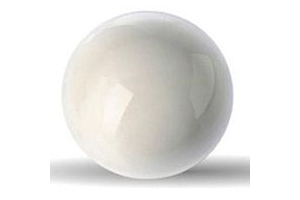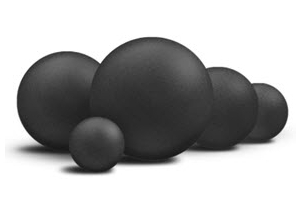Precision-designed plastic balls are used in a wide scope of applications. They play essential roles in areas that range from instrumentation, medical, and material handling to petrochemical applications and beyond. One critical factor in ensuring the overall success of a project that employs plastic balls is choosing the most appropriate material. However, choosing the best plastic ball material has become more and more challenging. The continuing advancement of technology and manufacturing has expanded the range of available plastic materials immensely. In fact, manufacturing grade plastics are currently available in close to 50,000 varieties. Doing the proper research ensures designers and buyers that the most appropriate and cost-effective choices can be made. Using the most appropriate plastic balls can increase the efficiency, productivity, and cost effectiveness of a product, as well as lengthen its overall lifespan.
Choosing the Best Plastics
While the number of plastic material alternatives may seem daunting, specific applications will often demand specific types of plastic balls. Furthermore, every plastic ball is designed with specialized purposes in mind, with most applications able to accommodate a number of varying materials. Buyers must weigh all the appropriate variables when making their plastic ball purchases and one of the most important factors is cost. While the quality of plastic balls is often seen as a paramount consideration, cost factors must often be kept in mind as well. So, the question that designers and buyers must contend with often boils down to this: which plastic balls fulfill the quality requirements of an application while providing the most reasonable price?
Fortunately, when cost is a critical factor, there are a number of materials that provide excellent performance at substantial savings. A number of examples are listed below for several different industries. Each contains commonly used plastic ball types for various industries and includes alternatives that perform the same job at lower prices. Sometimes the cost savings are substantial.
FDA Approved Applications
Commonly Used Material: Polymethylpentene (PMP). Commonly known as TPX, this thermoplastic polymer is fully FDA compliant. It is used in a range of industries for many different applications. Some of its most common uses include cookware and for other uses in the food processing industry.
Lower Cost Alternative: Polypropylene
(PP). Polypropylene is commonly used in households and commercial/industrial applications alike. It has a high melting point, which also makes it common in FDA approved food related applications, such as food containers and cookware. It also costs significantly less than PMP.
Petrochemicals
Commonly Used Material: Polyurethane
(PUR). This commonly used polymer provides high tensile, tear, and firmness properties. It is known for its fuel and oil resistant properties, making it an excellent candidate for petrochemical applications.
Lower Cost Alternative: Teflon, or polytetrafluoroethylene (PTFE). Developed close to the same time as polyurethane, Teflon is widely known for its use in cookware and wiring. However, its oil resistant properties also make it widely used for components in the petrochemical industry, and it costs less than polyurethane.
Fluid Handling
Commonly Used Material: Torlon, or polyamide-imides. Torlon has excellent thermal, mechanical, and chemical resistant properties. Its performance is well-known throughout the industrial sector, and it is often used in fluid handling applications. However, the cost of this polymer can be high.
Lower Cost Alternative: Phenols, or Phenolics. These compounds are well known for their diverse industrial and household uses, and are even sometimes taken internally as dietary supplements. Phenolics are fully capable of use in the fluid handling industry as well, and are priced lower than Torlon.
There are lower-cost alternatives for many other industries as well. The following chart includes the above industries, along with several others, and lists details of how costs can be saved by using lower cost plastic products.
Industry
|
Commonly Used Material
|
Lower Cost Alternative
|
| FDA Approved |
TPX |
Polypropylene |
| Petroleum |
Polyurethane |
PTFE |
| Fluid Handling |
Torlon |
Phenolics |
| Medical |
TPX |
Polystyrene |
| Material Handling |
Vespel |
Phenolics |
| Bearings |
Torlon |
PTFE |
| Instrumentation |
TPX |
Polypropylene |





